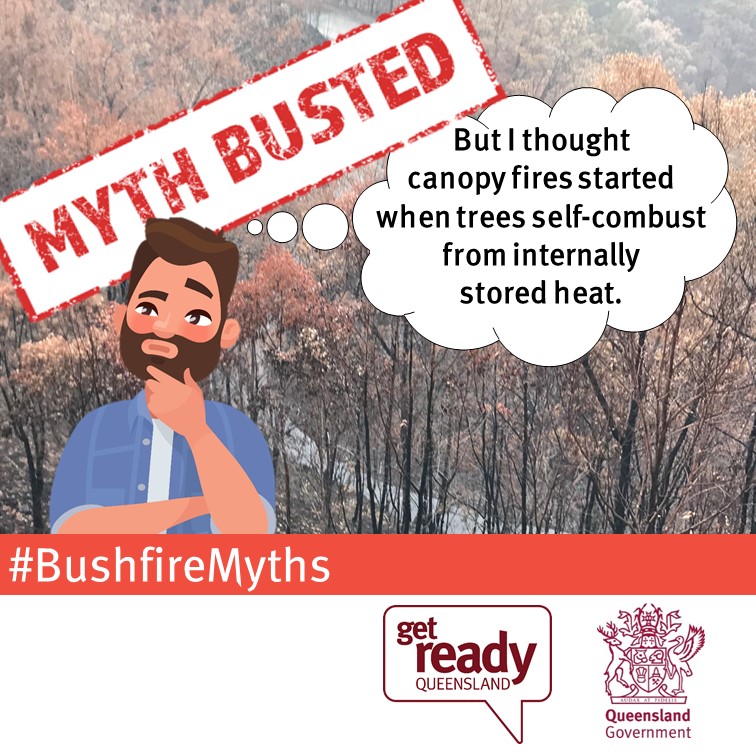Bushfire myths
There are a lot of misconceptions about bushfires. Here are seven myths to help support understanding of bushfires.
| Bushfire myth | Image |
|---|---|
1. Myth busted! – “But I thought that removing trees would slow the spread of fire.” Fire fronts move faster in thinned forests and open grasslands compared to thicker forests. This is because thick forest limits the wind speeds experienced below the forest canopy, causing the fire front speed to slow. | 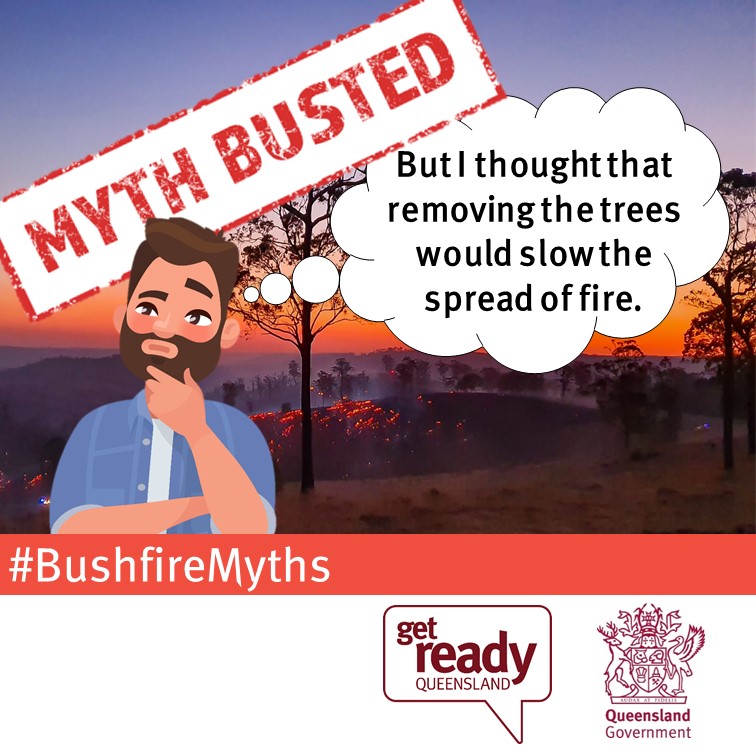 |
2. Myth busted! – “But I thought that homes not directly near bushfires would be safe.” Embers can travel hundreds of metres from their source. Many houses are lost due to embers lighting fine fuels. For example, embers igniting a timber deck can then ignite the house. Research tells us that buildings are most commonly ignited by embers and other wind-driven burning debris, rather than bushfire flames. Spotting from ember attack has been known to occur up to 40 kilometres away from the main fire front, but most spotting (around 80 per cent) occurs within 100 metres of burning vegetation. | 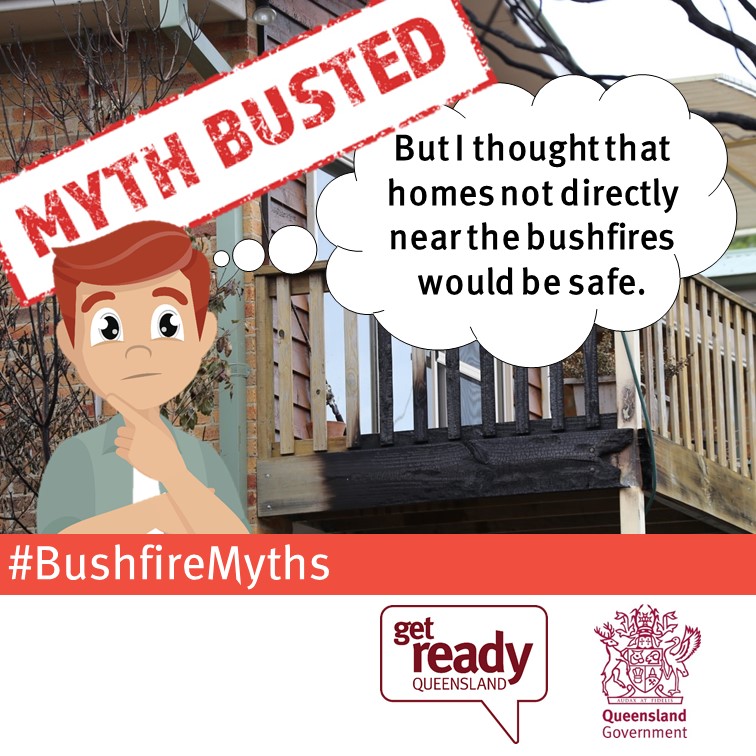 |
3. Myth busted! – “But I thought houses were most commonly ignited by bushfire flames.” Embers can travel hundreds of metres from their source. The majority of houses are lost due to embers lighting fine fuels, which then ignite nearby structures or combustible elements. | 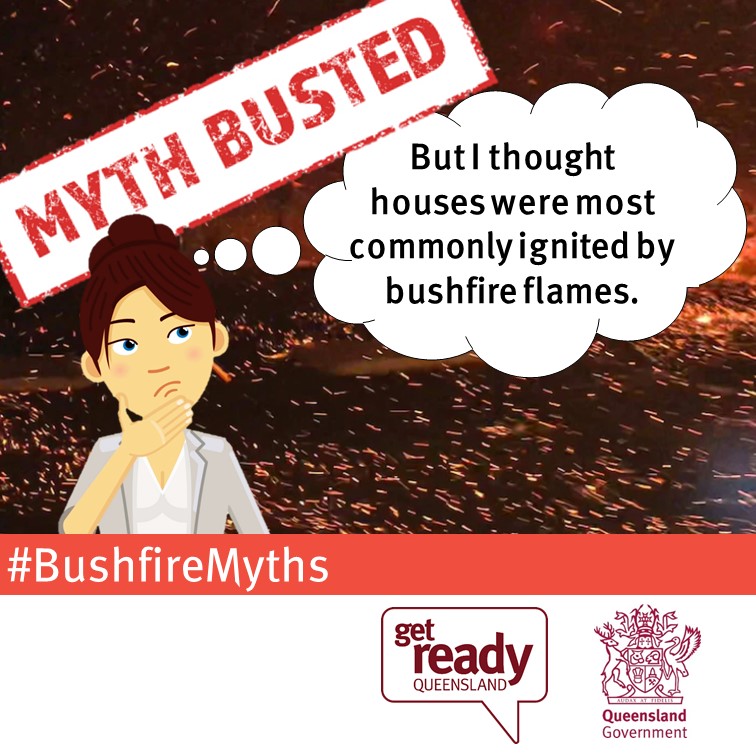 |
4. Myth busted! – “But I thought that embers only arrive from the direction of the prevailing wind.” Embers are wind driven. However, the wind direction experienced at ground level and out in the open is not a reliable indication of all possible wind directions an ember may experience. Wind strength and direction can change at any moment, and is influence in complex ways by the terrain, vegetation and buildings. Additionally, higher altitude winds can also affect where embers travel, with the wind sometimes moving in different directions at different altitudes. Multiple wind direction changes can be experienced during bushfire events, including moving in the opposite direction from the prevailing wind. | 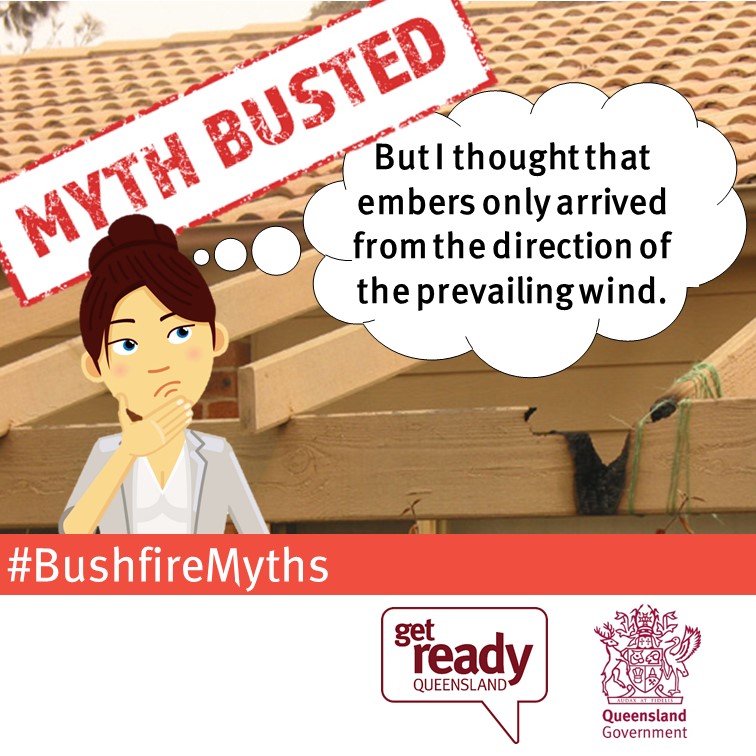 |
5. Myth busted! – “But I thought leaves were the main source of embers.” Embers are wind driven. However, the wind direction experienced at ground level and out in the open is not a reliable indication of all possible wind directions an ember may experience. Wind strength and direction can change at any moment, and is influence in complex ways by the terrain, vegetation and buildings. Additionally, higher altitude winds can also affect where embers travel, with the wind sometimes moving in different directions at different altitudes. Multiple wind direction changes can be experienced during bushfire events, including moving in the opposite direction from the prevailing wind. | 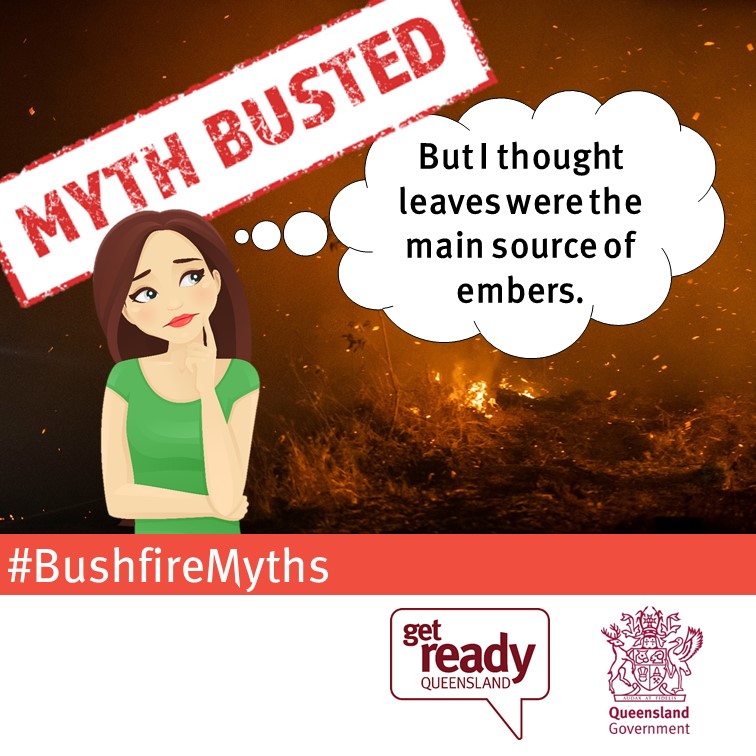 |
6. Myth busted! – “But I thought that canopy fires started when trees self-combust from internally stored heat.” Crown or canopy fires are usually ignited by flames reaching up into the canopy. These flames are produced by fine fuels on the ground, which then spread fire up into the canopy via a ladder of fine fuels, such as nearby shrubs. This crown fire can then spread as a running canopy fire (between trees) but only when there is a high amount of both surface and elevated fuels. The presence of surface fuel is essential for the spread of a canopy fire, as the fire will not spread if there are insufficient surface fuels to project flame into the crown. Crown fires in eucalypt forests are nearly always associated with an uphill (upslope) run of fire or fire runs driven by very strong winds. |
|
7. Myth busted! – “But I thought that Australia’s bushfires are so severe there is absolutely nothing we can do about them.” This is false. Both buildings and their surrounding landscapes can be designed and managed in a way that improves their bushfire resilience. This can greatly improve the chances of people and buildings surviving a bushfire. | 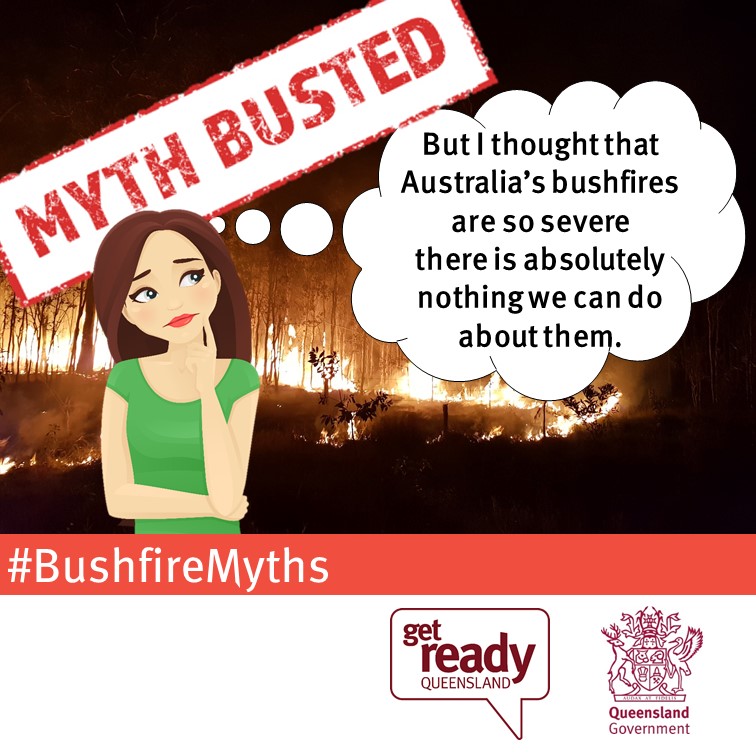 |
(Source: Bushfire Resilient Building Guidance for Queensland Homes)
More information
Prepare your home, property and family now and have your Bushfire Survival Plan in place before bushfire strikes. Learn more at:
https://www.fire.qld.gov.au/bushfires
Learn about Bushfire Resilient Building Guidance for Queensland Homes at:
https://www.qra.qld.gov.au/resilient-homes
